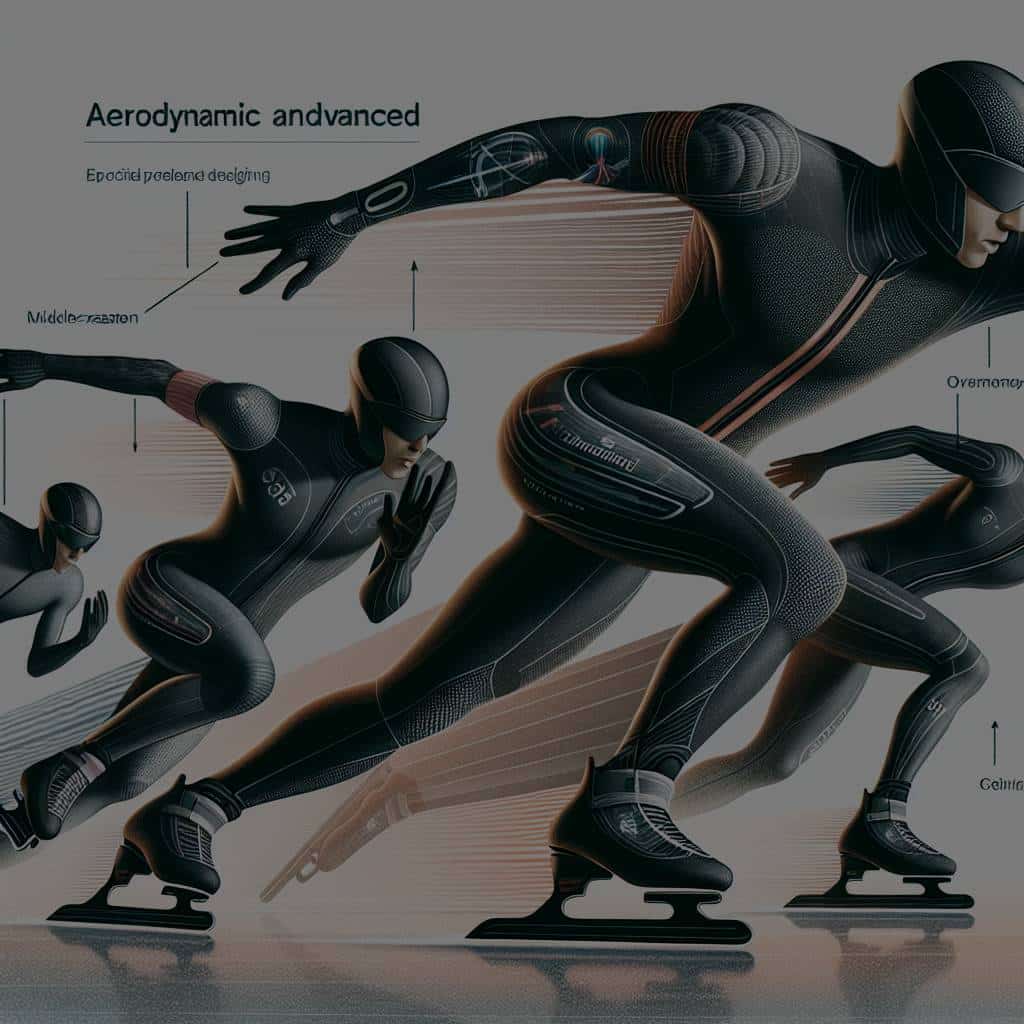How Can Advanced Fabrics Improve Aerodynamics for Speed Skaters?

As speed skaters, you’re well aware that success on the ice isn’t solely dependent on physical prowess or technique. Other factors come into play, including equipment design and the impact of aerodynamics on speed. Among these, the fabric of your skating suit is crucial. In this article, we delve into how advanced fabrics can enhance aerodynamics performance for speed skaters.
The Role of Aerodynamics in Speed Skating
Understanding the role of aerodynamics in speed skating is crucial if you’re to leverage advanced fabrics to improve your performance. When skating at high speeds, the body encounters air resistance, also known as drag. This drag can significantly slow down a skater.
A lire aussi : What Are the Techniques for Reducing Anxiety Before Major Gymnastics Competitions?
Academics and scholars have invested significant research into understanding drag and its implications for skaters. A Crossref search on the term ‘speed skating’ yields numerous studies centered on the impact of drag on speed skating. Similarly, a PubMed search reveals a plethora of articles on the same topic.
Drag impacts different parts of the skater’s body differently. For instance, the lower part of the body, particularly the legs, experience significant air resistance because they’re often in motion during skating. Consequently, reducing drag on the legs can significantly enhance a skater’s speed and performance.
Dans le meme genre : What Strategies Can Optimize Performance for Athletes with Visual Impairments?
Advanced Fabrics and Aerodynamic Design
The fabric of a skater’s suit plays a significant role in the skater’s encounter with air flow and, therefore, their aerodynamic performance. Advanced fabrics and design aim to reduce the air resistance experienced by skaters, thereby enhancing their speed.
Companies such as Under Armour have invested in the development of aerodynamic suits for athletes, including speed skaters. These suits are designed to streamline airflow around the body, thereby reducing drag and enhancing speed.
For instance, Under Armour’s skating suits feature strategic seam placements and surface structures to manipulate airflow. This innovative design reduces drag, particularly on the lower part of the body, allowing skaters to maintain high speeds with less effort.
The Future of Advanced Fabrics in Speed Skating
Looking into the future, it’s clear that advanced fabrics will continue to play a significant role in speed skating. Scholars and industry experts are investing in researching and developing increasingly sophisticated fabrics and designs to further reduce drag and enhance speed.
For instance, Google Scholar highlights numerous recent studies focused on the development of advanced fabrics for sports use. These studies encompass a range of topics, including the use of nanotechnology to create fabrics that can repel water and reduce air resistance.
Further, the design of skating suits is also evolving. Future designs are anticipated to incorporate even more sophisticated aerodynamic features, such as strategically placed vents that can channel airflow to reduce drag further.
Implementing Advanced Fabrics in Your Skating Routine
As speed skaters, you can leverage advanced fabrics and design to enhance your performance on the ice. Incorporate suits made from these advanced fabrics into your skating routine.
When selecting a suit, look for features that can help reduce drag. These include strategic seam placements, surface structures designed to manipulate airflow, and vents that can channel air. Additionally, opt for suits that fit snugly, as loose suits can create additional air resistance.
You can also consult with experts, such as trainers and equipment providers, to understand the best options for you. They can provide advice based on your specific needs and preferences, including your skating style and body shape.
Conclusion
In conclusion, advanced fabrics and aerodynamic design play a critical role in speed skating. By reducing drag, these features can significantly enhance a skater’s speed and performance on the ice. As a speed skater, understanding these elements and incorporating suits made from advanced fabrics into your routine is key to maximizing your performance.
The Science of Drag Reduction and Advanced Fabrics Application
The connection between speed skating and aerodynamics is a complex one, with the primary scientific concept involved being drag reduction. The principle of drag reduction focuses on reducing the frontal area, or the surface of the skater that faces the direction of motion, which comes into contact with air. The lower this frontal area, the less air resistance or drag the skater experiences, leading to higher speeds.
Within the realm of drag reduction, there are several key elements worth noting: The boundary layer, the drag area, and the drag coefficient. The boundary layer refers to the layer of air closest to the skater’s body, where air speed relative to the body is slower than the air speed farther away. This causes friction, which contributes to the total drag encountered by the skater.
The drag area is the product of the drag coefficient (an indicator of how streamlined an object is) and the frontal area. Advanced fabrics aim to reduce both these factors, hence lowering the drag area. By manipulating the surface texture of the fabric, it’s possible to influence the boundary layer air flow, reducing the friction coefficient and thus, the total drag.
Research from platforms like Google Scholar and Scholar Crossref show the utilization of wind tunnel tests to understand and reduce aerodynamic drag. Such studies have led to the development of rough fabrics, which paradoxically, can create a more streamlined boundary layer, reducing drag on the lower legs, a significant frontal area for speed skaters.
Advanced Fabrics and Lower Leg Aerodynamics
The lower leg area is a significant contributor to the frontal area and thus, to the total drag experienced by speed skaters. As such, a focus on this area is essential in the pursuit of speed and performance.
Developments in fabric technology have allowed for the creation of specialized suits that account for the unique aerodynamic challenges of the lower leg area. These suits feature strategic seam placements that optimize air flow around the lower legs, reducing drag and enhancing speed.
One such example is the green version of Under Armour’s speed skating suit, which uses a combination of different fabric textures to manage the boundary layer. By manipulating the surface structure, the suit helps streamline air flow around the lower legs, thereby reducing drag and increasing speed.
In terms of power output, the less effort a skater has to invest in overcoming air resistance, the more of their energy can be focused on propulsion. This is where advanced fabrics and aerodynamic design truly shine. By reducing the skater’s total drag, these suits help improve the skater’s power output, ultimately leading to improved performance on the ice.
Conclusion
The sport of speed skating is a complex interplay of physical prowess, technique, and equipment. Among these, the role of advanced fabrics and aerodynamic design is significant. By understanding and leveraging the science of drag reduction, companies like Under Armour have developed suits that can help skaters reach higher speeds with less effort.
As a speed skater, appreciating the role of advanced fabrics and incorporating them into your routine is essential. By doing so, not only will you enhance your performance, but you will also gain a greater understanding of the science behind your sport. As research continues and fabric technology advances, we can expect to see even more impressive performances on the ice, pushing the boundaries of what is possible in speed skating.
